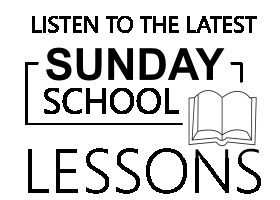 Yes, Moses is still receiving instructions from God on the Tabernacle and the courtyard. Now God tells Moses how the priests are to be dressed when they perform their priestly functions.
Yes, Moses is still receiving instructions from God on the Tabernacle and the courtyard. Now God tells Moses how the priests are to be dressed when they perform their priestly functions.
From Firstborn Son to Aaron’s Sons
Read Exodus 28:1
– Whom does God appoint to serve as priests among His people?
– Up this point, who served as priests among the people of Israel?
Earlier in Exodus 13:1-2, 11-13 and 22:29-30, God commanded that the firstborn son of each household was to consecrate (set apart) its son. Through this consecration, God was imprinting on the mind of His people several things.
- The firstborn belonged to the Lord because He spared their lives in the 10th plague when He delivered them from Egypt.
- This consecrating (or setting apart of the firstborn for sacred service) reminded the Israelites of God’s grace to His people in Egypt. Earlier in Exodus, we saw that the firstborn collectively represented all of Israel (Exodus 4:22-23). In the Old Covenant, God set Israel apart for sacred service as a nation, where Israel then collectively represented the entire world.
- The consecration of the firstborn foreshadowed the Firstborn Son, Jesus, who would be set apart to save the people. And because the Messiah would come through the people whom God had consecrated as His own, and Israel collectively represented the rest of mankind, the Messiah to come would be for the salvation of all.
To figure out what the nature of their consecration entailed, we have to look at other passages that Moses wrote. It’s then that we find out that they were consecrated for sacred service. In Numbers 3:12 and 8:14-18, God chose the Levites to serve as substitutes for every first-born son dedicated to the Lord. God first told Moses of this change on Mt. Sinai even before Exodus mentions the firstborn sons participating in false worship. (Does this mean that the Israelites had already started to worship is a false way and so God then gave Moses these instructions?)
God told the Levites to perform the liturgical rites in the sanctuary. Because of that, we know that the first-born sons had originally served in that role during the Old-Covenant Divine Service. We can observe this switch in spiritual leadership after the golden-calf incident at Sinai, where the tribe of Levi remained faithful to Yahweh when the rest of Israel did not (Exodus 32:29). We’ll get to this soon.
Read Exodus 28:2
– What purpose do the priestly garments serve?
– They are for whose “glory”?
– Why beauty?
– Discuss: Priests led worship wearing garments that glorified God and were beautiful. Although we worship in the New Covenant, does the beauty and glory principles behind the priestly garments have anything to say for us today about pastoral garments during worship?
Read Exodus 28:3-5
– Who will make the priestly garments?
– Discuss “filled with a spirit” versus “filled with the Spirit.” Note the Greek-language Old Testament’s (the Septuagint) use of empimplemi in this verse and the New Testament’s use of empimplemi when clearly referring to the Holy Spirit.
– The description of the colors and fabrics sound also sounded like what fabrics?
– The priest garments matched the colors of the Tabernacle. What are the implications of that?
The Ephod
Read Exodus 28:6-14
The ephod was a sleeveless linen apron with shoulder straps and a waistband. It covered the back and chest and had colorful strands of gold, blue, purple, and red embroidery. To show that the high priest represented the people of Israel before God, two onyx stones were mounted on the shoulder pieces engraved with the names of the twelve tribes.
The Breastplate
Read Exodus 28:15-29
The breastplate was a folded square of linen worn over the ephod. Colorful embroidery covered the front, which had 12 gemstones, each inscribed with the name of an Israelite tribe.
– We find two places where the tribes of Israel of mentioned on precious stones: The ephod and breastplate. What are the implications of that?
– What relevance does this have for us in the New Covenant, since we are now made up of “all nations”?
The Urim and Thumim
Read Exodus 28:30
To this day, Bible scholars don’t know what the Urim and Thummim really were. The words themselves seem to be plural forms of the Hebrew words “light” and “dark,” although there is disagreement over that.
The ESV say that through the Urim and Thummim, “Aaron shall bear the judgment of the people of Israel on his heart before the LORD.” The Hebrew word for “judgment” is mishpat, which can mean “judgment” or “decision.” Here, decision is the better understanding of misphat based on what else Scripture has for us on the Urim and Thummim:
- Through the High Priest’s use of the Urim and Thummim, the leader of Israel could ask God a question through the High Priest. We see this with Joshua in Numbers 27:21, with Saul in 1 Samuel 14:37, and David in 1 Samuel 23:2).
- The question had to be asked in such a way as to make only a “yes” or “no” answer possible. The Lord’s answer was given only to one question at a time.
- In some circumstances, when things were not in order, the Lord refused to give answer through the Urim and Thummim (1 Samuel 14:37).
Thus, through the Urim and Thummim, the High Priest could use them in some way to discern the will of God for Israel in specific matters that were beyond human ability to decide (Numbers 27:21; 1 Samuel 14:41).
The High Priestly Robe
Read Exodus 28:31-35
– Again, discuss the implications of the color of the robe.
– What did the priest wear at the bottom of his robe? Why?
The Turban and Golden Headpiece
Read Exodus 28:36-38
– What did the headpiece have written on it?
– What was the purpose of this item?
The high priest was the atoning mediator between the people and the Lord. Whatever gifts and sacrifices the sinful people brought to the Lord in their acts of worship were made acceptable through the High Priest’s mediation.
– Would it make sense for a pastor to wear such headgear in the New Covenant? Why or why not?
Finishing the Priestly Ensemble
Read Exodus 28:39
The descriptions of these items are vague and we don’t exactly what they looked like.
Concluding Words
Read Exodus 28:40-42
– What undergarments were the priest to wear?
– What was their purpose?
– What happened if the priests did not wear these garments? Why?
– Thus, the garments represented God doing what concerning their sinful flesh?
Galatians 3:27: For all of you who were baptized into Christ have clothed yourselves with Christ.
– In the New Covenant, what makes us fit to be in God’s presence?
This part of Exodus tells that Moses is to anoint, consecrate, and ordain the priests. How that will be done will be covered in next week’s lesson.
The Old Testament Apocrypha’s commentary on the priest’s garments
Read Sirach 45:6-13
– How does Sirach describe the entire panoply of garments that the High Priest wore?
– What does this have to say about us in the New Covenant and the esthetics of what we use to beautify our worship?
Click here to go to Lesson 26.

